Play Games, Learn Math! Number Path Games
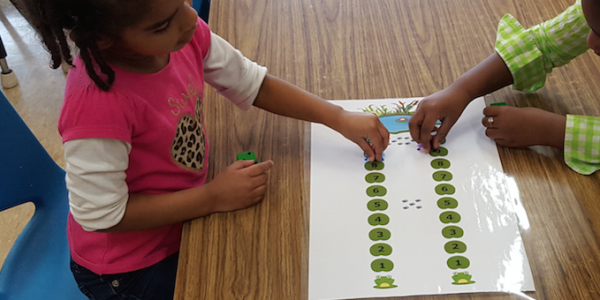
You are here
Number path games, when played like board games, are ideal for helping preschool children learn math. These games build children’s understanding of early math concepts, such as counting and comparing numbers, while giving them experience with a valuable math tool—a number path.
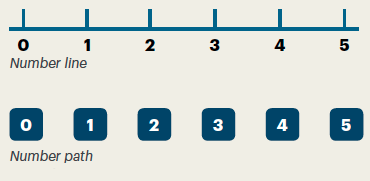
Teachers may wonder what the difference is between a number path and a number line (both are shown at right). A number line is a tool that shows the distance between whole numbers, like a ruler. This tool can be confusing for preschool children if they land between numbers as they are counting. A number path is a counting tool—each number is written within a rectangle or other shape, and it is easier for young children to use when counting. In a number path game, children build confidence as they practice counting, use one-to-one correspondence, and learn that numbers come before and after other numbers. Having experience with a visual model like a number path will help preschool children be prepared for kindergarten and later mathematics learning.
"I am excited when children play the game and start recognizing numbers and reciting them from 1 to 10."
—Ivonne, Lawrence, MA
What will children learn?
In a number path game, numbers are evenly spaced along a path that moves from smaller to larger numbers (e.g., 1 to 5). Children move along the number path—and practice several math concepts—by rolling a die or using a spinner.
While playing number path games, children practice these early math concepts:
- Recognizing written numerals as they move on the path
- Reciting numbers in the correct order
- Using one-to-one correspondence when moving on the board
- Recognizing the number of dots in die patterns without counting the dots (subitizing)
- Understanding number magnitude and that numbers come before or after other numbers
- Using vocabulary such as closer, farther, more, less, before, after
For these definitions of mathematics concepts and a summary of how children progress in developing them, see “Early Math Concepts Related to Numbers and Counting.”
At this age, children are still learning how to play games and are practicing skills like taking turns, moving pieces, using dice, and counting out spaces. These skills are important in and of themselves because they allow children to access other opportunities for board game play. Many board games have mathematical elements—including counting, counting on, numeral recognition, logic, strategy, and classification—that are worthwhile and can extend children’s learning in and out of school. For most children, building game-playing skills takes time, patience, and explicit support.
Jumping on the Lily Pads
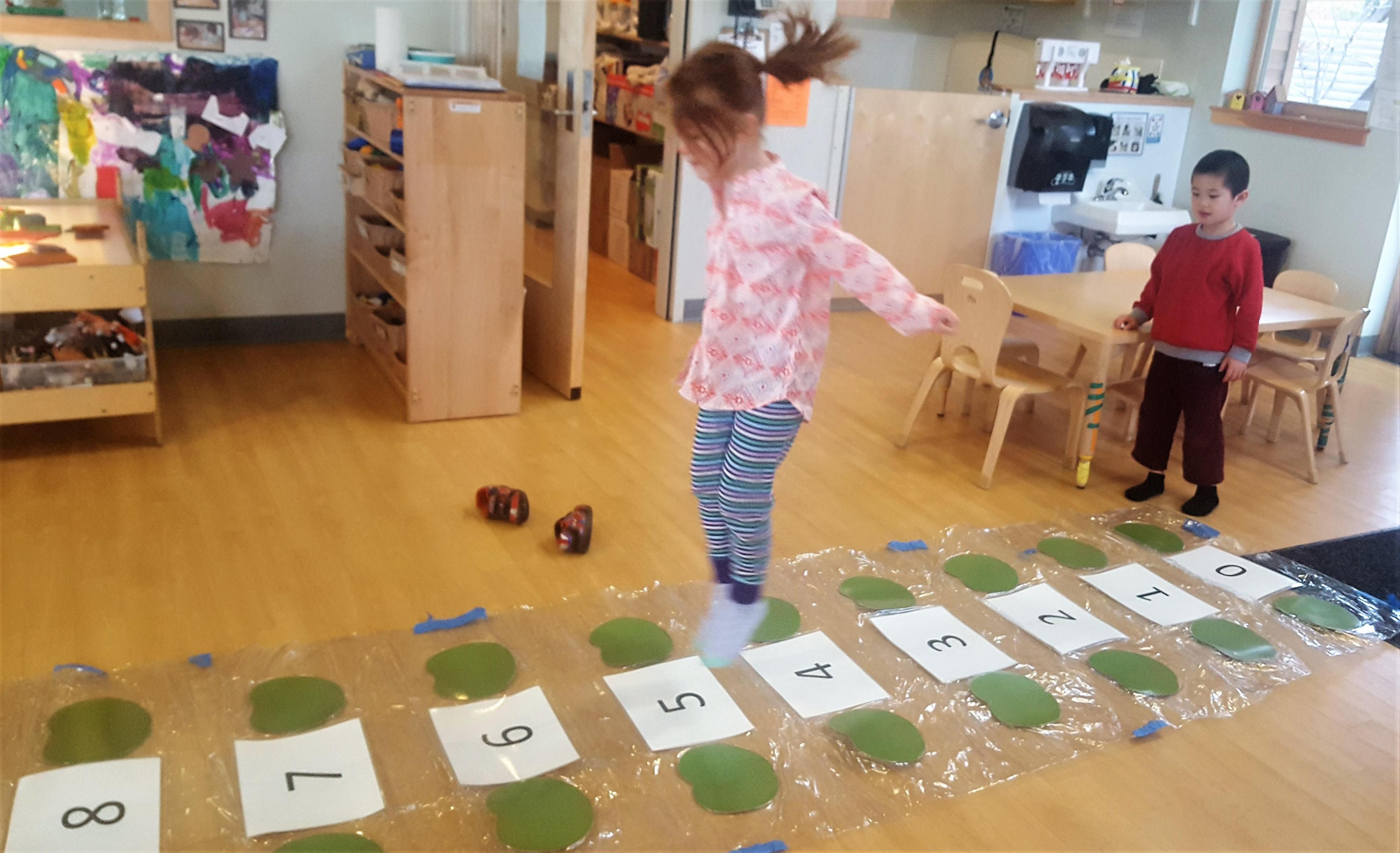
Jumping on the Lily Pads is an example of a number path game that can be played as a board game or in a larger version on the floor. Children take turns rolling their die and moving their frog token along a path of evenly spaced, numbered lily pads leading to a pond. The goal is to be the player whose frog reaches the pond first.
Game 1: Number Path Floor Game
Focus on gaining familiarity with the number path, understanding that numbers come before or after other numbers, stable counting order, one-to-one correspondence, and counting on.
Ages 3 + / 5 minutes or longer
- Prepare a number path on the floor that is big enough for children to jump on. Start with a path from 1 to 5 or 1 to 10, and make the path longer as the children gain experience (and as space allows).
- Player 1 starts as the frog, standing at the beginning of the number path but not on lily pad 1.
- Player 2 rolls the large game cube (see “Number Path Games: Materials and Teacher Tips” for tips on making cubes) and calls out how many to jump.
-
Player 1 jumps that many spaces, counting as she goes. For example, roll
 ; count “One, two, three”; land on 3.
; count “One, two, three”; land on 3.
- Play continues until Player 1 jumps on (or beyond) 10 and goes for a swim in the pond.
- Many children enjoy continuing the game by jumping back to 1. This gives them practice counting backwards!
Things to notice as children play
This game asks children to integrate many concepts. When children roll the cube, they have to use their counting or subitizing skills to know how many dots in all. They have to remember the number that was rolled and then jump that many spaces—one space for each count (one-to-one correspondence). They also have to know when to stop jumping (cardinality) and roll again.
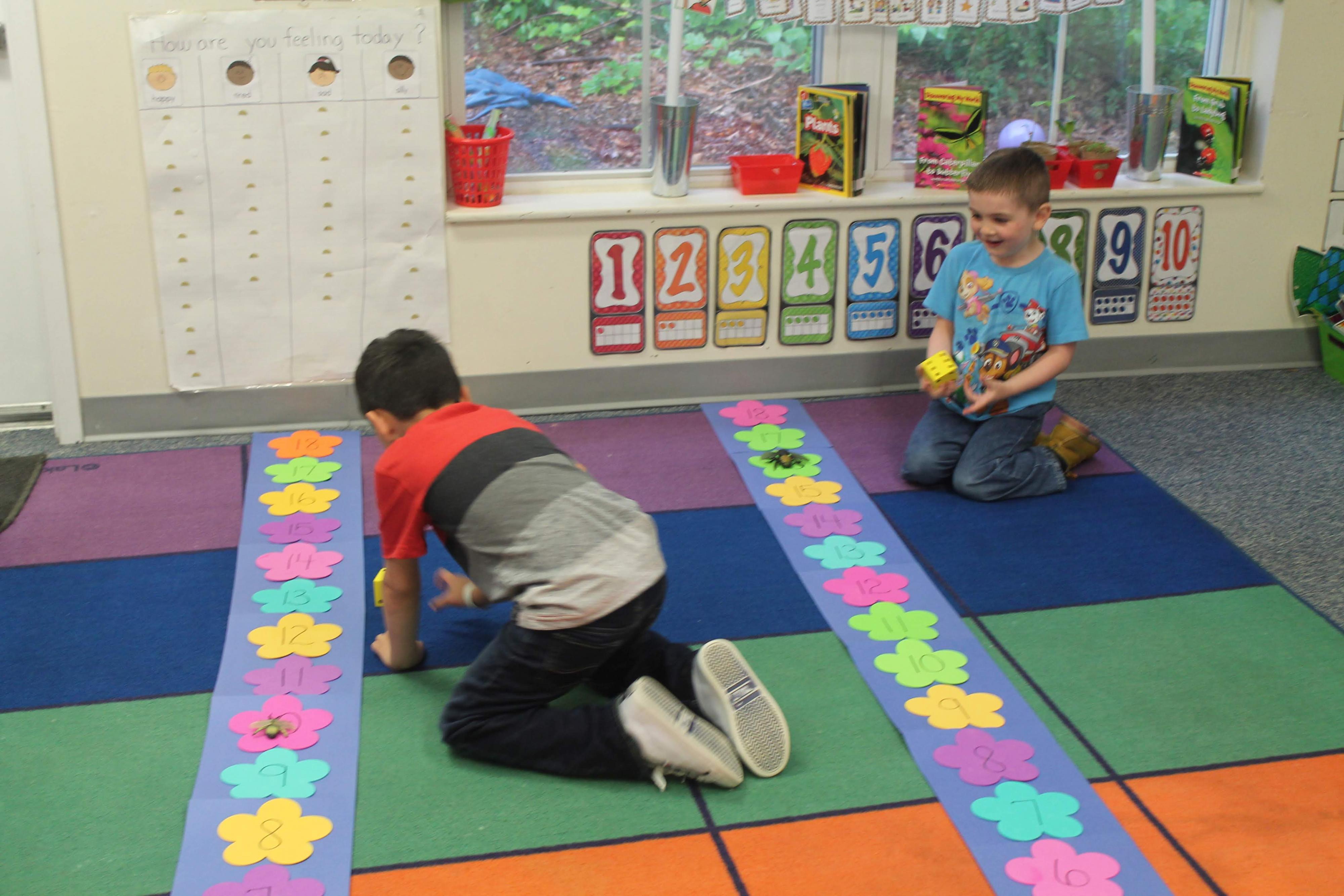
As children gain confidence in those skills, they can start paying attention to the written numerals they are jumping on. You can ask children which number they started on and which number they landed on. Playing this game, children are learning the relationships between number words, quantity, and written numerals. Help them learn to describe what they’ve done by summarizing it: “You started on 4, jumped two spaces, and landed on 6.” When you think they are ready, you can ask them to describe their moves.
—Kellie, Holyoke, MA
Playing the game on a life-size board, where children do the jumping from one numbered space to another, helps them better understand number paths and get excited about board games. Having children be the tokens that jump on the number path provides an ideal context for learning how to count on from the number they are standing on.
Game 2: Number Path Table Game
Focus on number magnitude, understanding that numbers come before or after other numbers, stable counting order, one-to-one correspondence, and written numerals.
Ages 3 + / 5 minutes or longer
- Give each pair of children a number path game board. Give each child a cube and a frog token (or whatever is available).
- Place the token on the picture of the frog below the number 1 (home).
- Taking turns, children roll the cube and jump that number of lily pads.
- Play continues until children’s frogs land on (or past) 10 and go for a swim in the pond.
- Many children enjoy continuing the game by jumping back to 1. This gives them practice counting backwards!
Things to notice as children play
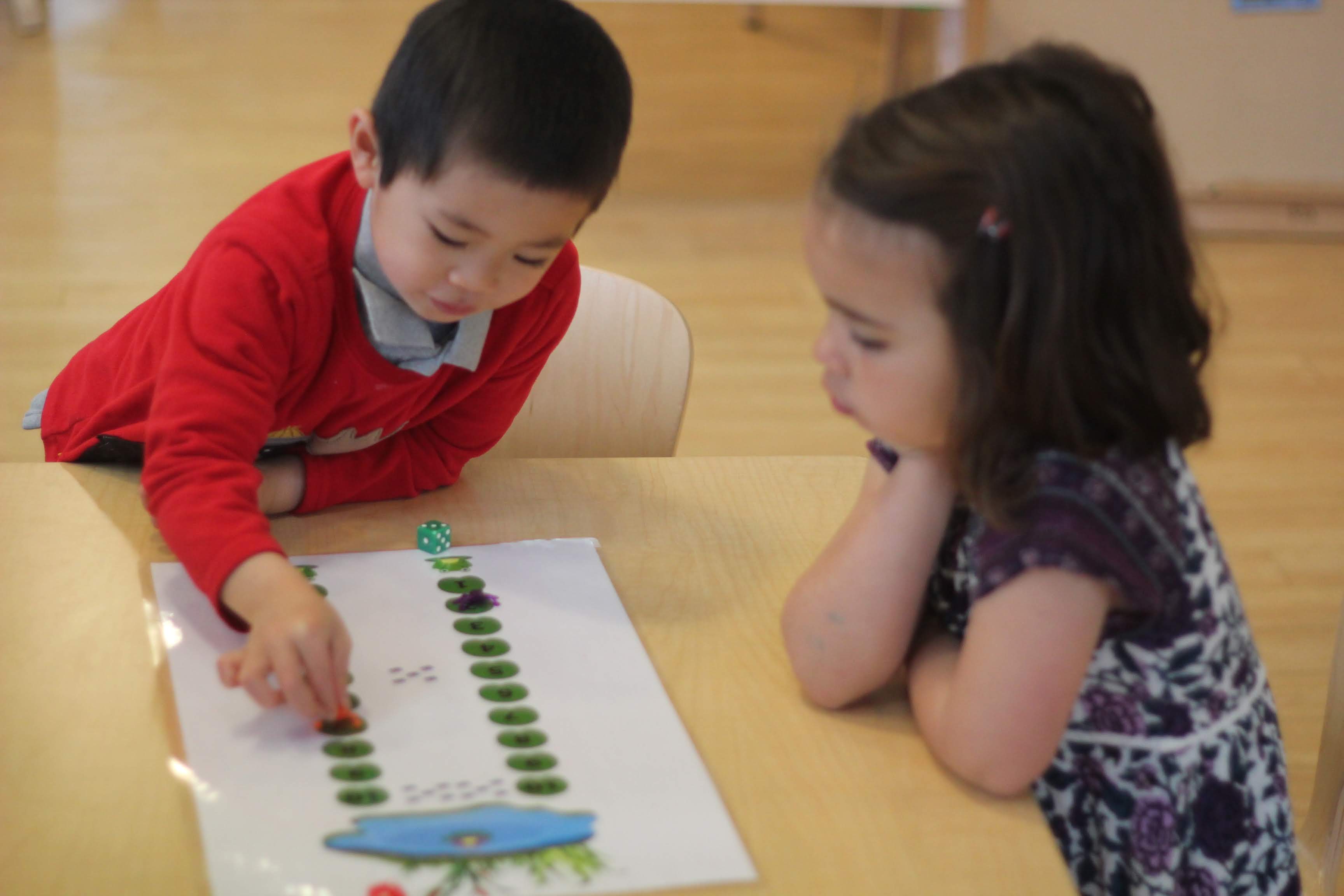
The numerals on the lily pads are arranged vertically. We want children to see that as they move from 1 to 5 or from 1 to 10, they are moving farther from the start (home). We also want them to see how much farther: 10 is a lot farther away from 1 than 2 is from 1. Preschoolers are developing their understanding of number magnitude—knowing that 5 is greater than 2 and beginning to understand how much greater. Each time children jump on the lily pads, one by one, they are reinforcing kinesthetically that each number gets bigger by one jump. Jumping also helps them understand that the distance between consecutive whole numbers is the same—10 is one jump bigger than 9, just as 2 is one jump bigger than 1.
"It’s nice to say, ‘I want to play a math game with you’ and have the response be ‘YEAH!’"
—Katie, New Hampshire
Game 3: Number Path with Counting On
Focus on number magnitude, understanding that numbers come before or after other numbers, written numerals, and counting on.
Ages 5 + / 5 minutes or longer
- Give children the same materials as in game 2, perhaps extending the board to 20 lily pads.
- Play is the same as in game 2, except that you count on from the space you are on (instead of counting from 1 every time you move). For example, if a child is on 2 and rolls , the child counts “Three, four” while jumping, saying the names of the numerals and landing on 4.
Things to notice as children play
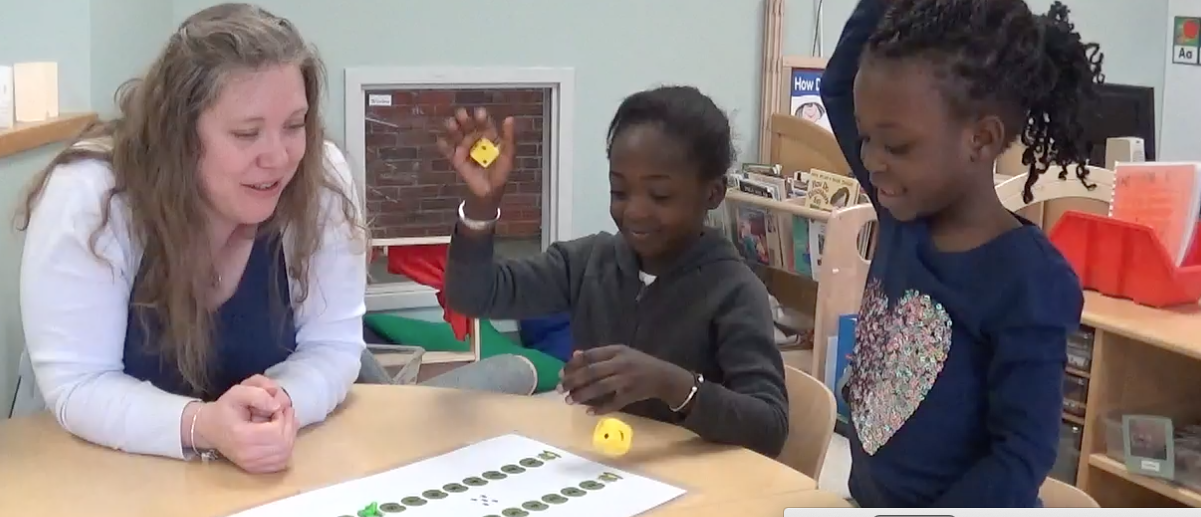
Counting on (instead of counting from 1) is hard and takes practice! It is especially hard for adults who are used to counting from 1 each time they move on a game board. Make sure to give yourself time to practice before introducing this to children.
Even though this version is difficult, it’s worth the work for the extra skills children develop. Counting on while playing helps children focus on the numbers, how far they have gone, and what numbers come before and come after. Children also gain skills in number estimation and number magnitude. In elementary school, they are better prepared to use the counting on strategy when they learn addition. Give this version a try!
ENGAGE FAMILIES IN MATH
Send home game boards and instructions so families can play this game at home. At the link ym.edc.org/jumping-on-the-lily-pads, you’ll find different printable game boards. Two bilingual Spanish/English math minibooks that complement these games can be printed from ym.edc.org/picture_book/frog-jump and ym.edc.org/picture_book/jump-to-10. These are great resources for your classroom!
Number Path Games: Materials and Teacher Tips
Materials to create and collect
Templates for lily pad number path games can be printed from ym.edc.org/jumping-on-the-lily-pads.
For each pair of children playing, you will need the following:
Floor game
- Lily pad numbered path on the floor.
- One large cube (a homemade die) for each player, with dots representing numbers 1–3. Using a permanent marker or dot stickers, mark each number on two sides of the cube to fill all six sides. (It’s best not to use a regular die with 1–6 dots because children will get less experience playing if they roll large numbers, like 6, and finish the game quickly.)
- Children are the frogs jumping on the lily pads on the floor!
Tabletop game
- One lily pad game board with numerals 1–5, 1–10, or 1–20.
- One small cube (a homemade die) for each player, with dots representing numbers 1–3. Using a permanent marker or dot stickers, mark each number on two sides of the cube to fill all six sides. (It’s best not to use a regular die with 1–6 dots because children will get less experience playing if they roll large numbers, like 6, and finish the game quickly.)
- Two tokens (frogs, if possible) to move along the path.
Tips and suggestions for playing
- Play these games with the children at the math center during small group time or center time. Support children’s language development by describing their moves on the board; for example, “You started at three, jumped forward two spaces, and landed on five.”
- When playing a tabletop number path game, have children roll their cubes in a tray or shoebox so they don’t roll off the table.
- At this age, children are just learning how to play games and practicing skills like taking turns, moving pieces, using dice, and counting out spaces. These game playing skills may take time and explicit support to develop.
- Children may need practice “reading” the dots on the cube—i.e., seeing and knowing that they jump the number of spaces shown on the top face of the die.
- Create your board or floor game based on the class’s interests. You could have a bee buzzing along a path of flowers or a dinosaur stomping on a path of dinosaur footprints.
Questions to ask during play
- Which number did you start on?
- Which number did you land on?
- How far are you from the pond? From the beginning?
- Who is closer to the pond? Who is farther away? By how much?
- What do you need to roll to land exactly on 5? On 10?
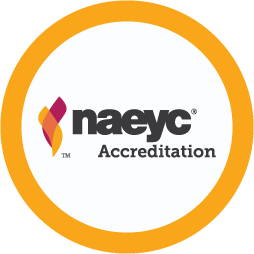
STANDARDS 2: CURRICULUM; 3: TEACHING
2F: Early Mathematics
3G: Using Instruction to Deepen Children’s Understanding and Build Their Skills and Knowledge
Photographs: © EDC
Kristen E. Reed, project director at EDC, has worked as a teacher, curriculum developer, professional development facilitator, and researcher. For more ways to make math engaging, challenging, and fun, visit ym.edc.org. [email protected]
Jessica Mercer Young is a research scientist and developmental and educational psychologist specializing in early learning at Education Development Center.